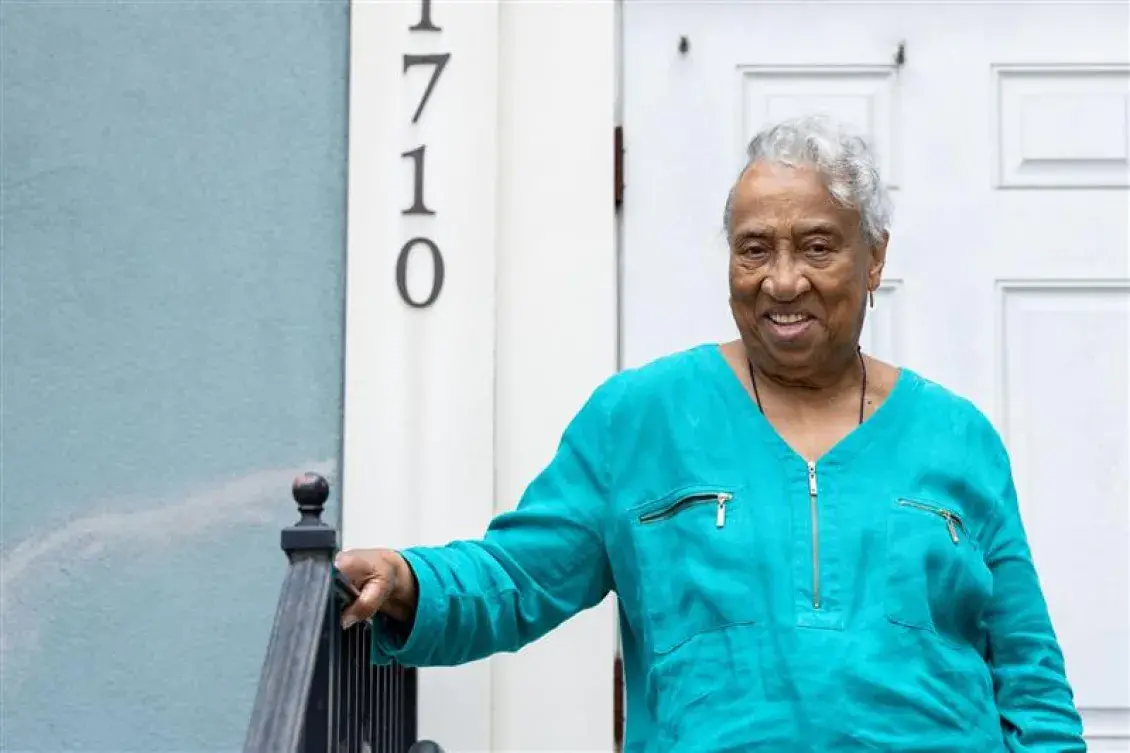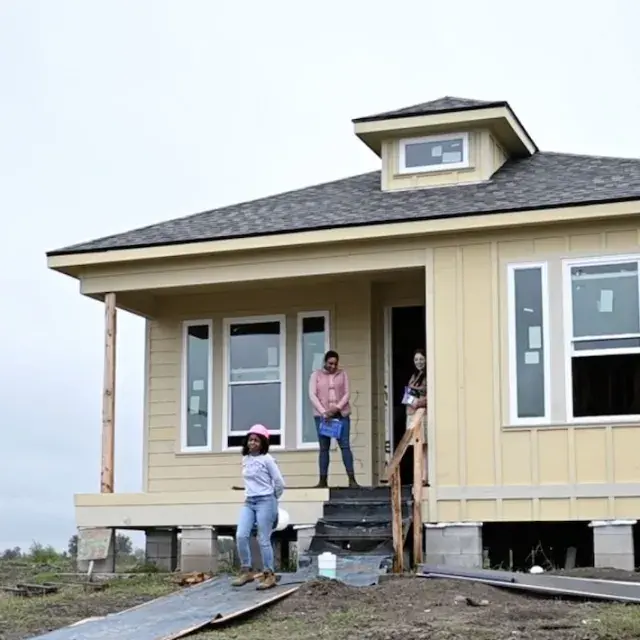Emelda Paul was 23 when she moved to a new apartment just a few blocks and “over the tracks” from her childhood home. She had three young daughters, and Lafitte — the public housing complex in New Orleans’ storied Tremé neighborhood — felt like the perfect place to raise a family.
Nearly 70 years later, Paul calls herself a lifetime Lafitte resident, even after the bricks of the original buildings have been replaced with colorful rows of townhomes built to mirror New Orleans architectural style to become Faubourg Lafitte.
In August of 2005, Hurricane Katrina upended her life and sent her to Arizona temporarily, but the story of Lafitte and the arc of Paul’s life have continued to intersect to this day. Even after the original Lafitte was demolished and redeveloped, she moved back and continued to play an active role in the community.
“People from New Orleans are resilient. We bounce back,” Paul said in a recent interview. “We fall down, but we get up.”
Early Years
Emelda Paul was born 91 years ago, not far from her current apartment at Faubourg Lafitte in the Treme neighborhood. Not long after, the first residents moved into newly constructed public housing known as “Lafitte Place.”
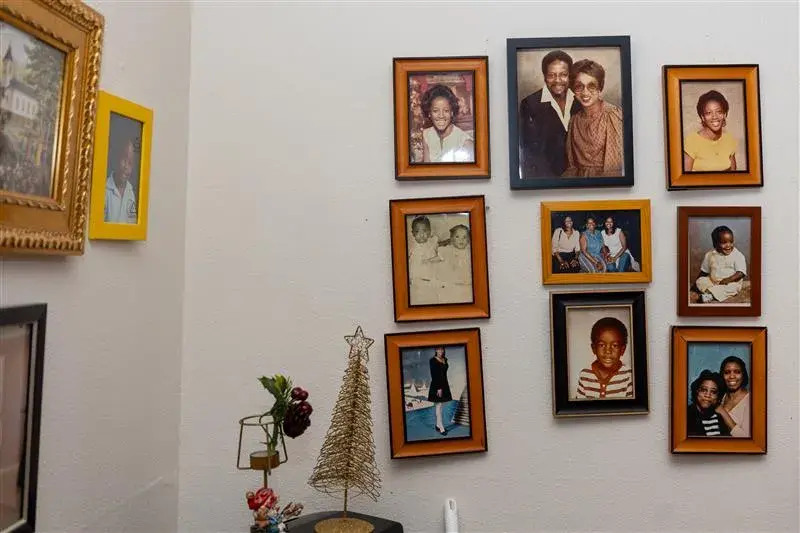
Paul and her grandmother had moved to the St. Bernard Housing, where she lived until she started a family of her own. “When I heard I could apply to live at Lafitte, I did just that,” Paul said.
Raising a Family
At 23, Paul was overjoyed after moving to Lafitte with her three young daughters. “We lived right here on Roman Street in one of the original buildings, and we loved it,” Paul said. “In the early days at Lafitte, we all worked together.”
Paul says she and her family spent so much at time at the park (now the Greenway), that people called it “Miss Emelda Park.” She tended to her garden, sat on her porch to socialize with neighbors, and jumped in to help with neighborhood issues whenever she could.
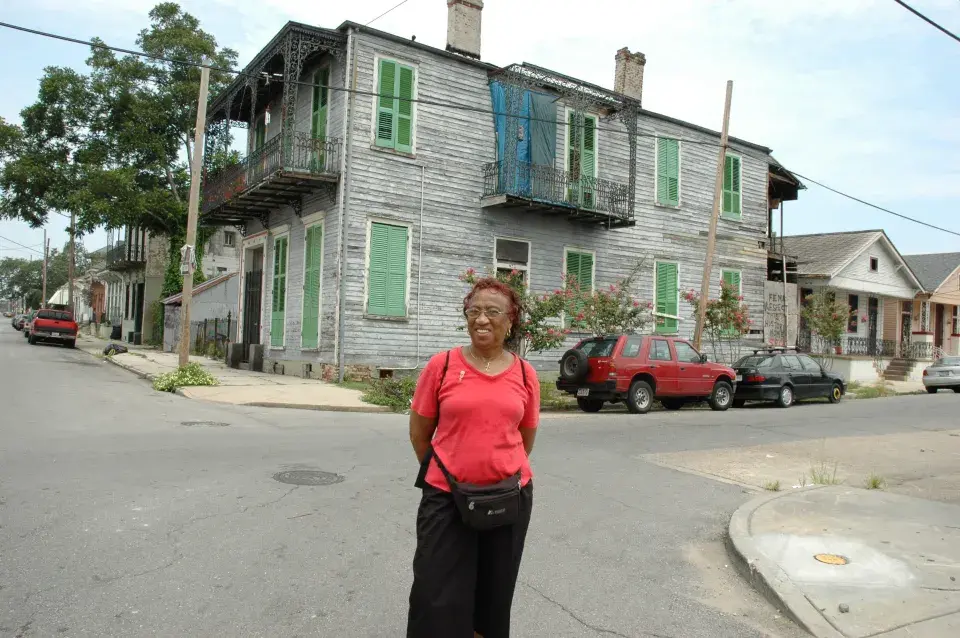
“My family used the park at Lafitte all the time,” she said. That continued even after she became a grandmother. “Whenever the lights would go out, my grandson’s friends would say ‘go tell Miss Mel the lights are out in the park.’ In other words, I was the type of person to make sure things in the neighborhood were working.”
Up until Hurricane Katrina, 2,000 residents including 800 children lived at Lafitte. Now, construction has begun on the last redevelopment phase.
Katrina Hits
“I was sitting in the kitchen and my daughter and her friends were out on the porch. The water was rising, but I said, ‘we’re not going anywhere.’” Soon though, cars were floating by outside Paul’s window, and she realized it was time to go. She and her family walked along the Interstate, eventually ending up at her other daughter’s home, and then the airport.

Leaving New Orleans
Paul flew to Arizona, where she stayed with a granddaughter who lived there. “We were all taken out of our comfort zones and living in strange places where they called us ‘refugees.’ “
She ended up spending two years in Arizona, joining a local choir, attending city council meetings, and “getting involved in almost everything,” including organizing a local Mardi Gras celebration. Still, Arizona didn’t feel like home and Paul and her family made plans to return to New Orleans.
Demolition of Lafitte
While Paul was away, she was upset to find out that the Lafitte was sealed up and slated for demolition. She recognizes though that even before Katrina, the Lafitte buildings had fallen into disrepair. “Maybe it was time for us to move because those bricks were deteriorating and there were a lot of things that needed to be repaired. And they were being neglected.” Once Paul had packed up a U-Haul and ventured home, she moved into a senior community on the West Bank in New Orleans.
Redevelopment and rebuilding
My name is Emelda Paul. I was a 30-year resident of Lafitte and I am the president of the Lafitte Residents Council. I am here because I want our people, our families to return home to New Orleans.
testimony before Congress in September of 2007
After HUD and HANO announced the decision to demolish the “Big Four” New Orleans public housing developments, the agencies selected Enterprise and Providence (L&M Development was eventually added to the team) to redevelop Lafitte. Paul was one resident who spoke out in favor of the plan to rebuild. “I had to do a lot of testifying and a lot of talking,” including a trip to Washington, D. C. to testify before Congress on the need for redevelopment and improvements in the new Lafitte.
Enterprise and Providence agreed to three core commitments as they began the redevelopment process: Listening to community voices during the redevelopment process, giving the 865 former Lafitte families and individuals the opportunity and first priority to return home, building 900 subsidized, affordable homes as part of a mixed-income community on and around the site.
Back at Home
On a recent warm and steamy August day, Emelda Paul shared her story at an event where local leaders and community members gathered to celebrate the groundbreaking of the last redevelopment phase on the footprint of the former public housing site at Faubourg Lafitte. This phase will continue to advance the development of the former Lafitte public housing site, a process that began 18 years ago.
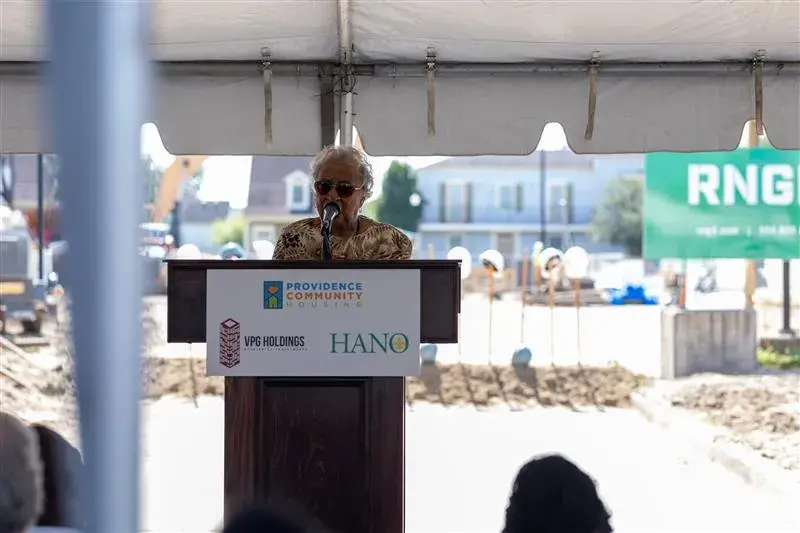
Paul loves her Faubourg Lafitte apartment where she has lived for over a decade now, a place that is filled with family photos and a lifetime of mementos. “I can look right out on the Mardi Gras from here,” she said. “The only thing I miss is the porch where I used to spend so much time.”
At 91, Paul is still active in the community, volunteers at a local hospital, and is in regular contact with management when she sees any problems. “I get along with management and with residents.”
There have been some recent disagreements; a younger couple nearby plays loud music and some residents have complained. “I say they can play their music. Look, I was young once too,” she said. “So, I let them play their music and I close my door and it’s fine. What’s important is that we still look out for each other.”
